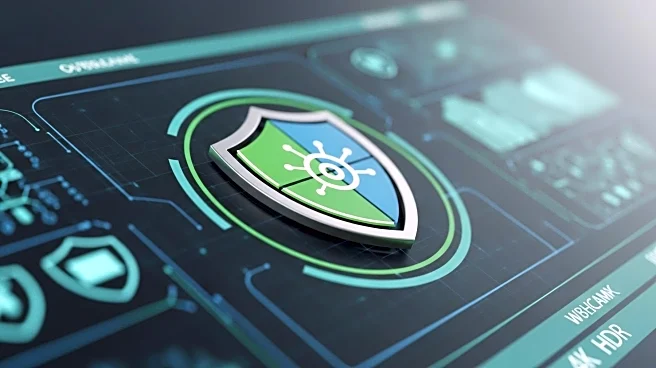What is the story about?
What's Happening?
A sophisticated threat actor known as TAG-150 has emerged, posing a significant cybersecurity risk by deploying multiple self-developed malware families since March 2025. The group has created and deployed CastleLoader, CastleBot, and CastleRAT, a remote access trojan that marks a concerning evolution in their capabilities. TAG-150 initiates infections through Cloudflare-themed phishing attacks and fraudulent GitHub repositories, deceiving victims into executing malicious PowerShell commands. Despite limited engagement, the campaign achieved a 28.7% infection rate among victims interacting with malicious links. Recorded Future analysts identified a multi-tiered infrastructure supporting TAG-150's operations, revealing a sophisticated command-and-control architecture spanning four tiers. This infrastructure includes victim-facing servers, intermediate servers accessed via RDP, and higher-level infrastructure for operational management and backup. The malware ecosystem serves as an initial infection vector for delivering secondary payloads, indicating either a Malware-as-a-Service operation or strategic partnerships with other cybercriminal groups.
Why It's Important?
The emergence of TAG-150 highlights the growing sophistication and technical capabilities of cybercriminal groups, posing a significant threat to U.S.-based organizations. The group's ability to develop and deploy advanced malware families underscores the need for enhanced cybersecurity measures and vigilance among businesses and institutions. The high infection rate achieved through social engineering tactics demonstrates the effectiveness of their approach, potentially leading to widespread data breaches and financial losses. The multi-tiered infrastructure and advanced persistence mechanisms employed by TAG-150 suggest a well-organized operation with the potential for long-term impact. Organizations must prioritize cybersecurity to protect sensitive information and maintain operational integrity in the face of evolving threats.
What's Next?
Organizations affected by TAG-150's activities may need to implement stronger cybersecurity protocols and conduct thorough investigations to mitigate potential damage. Cybersecurity firms and analysts will likely continue monitoring TAG-150's operations to understand their tactics and develop countermeasures. Collaboration between industry stakeholders and law enforcement agencies may be necessary to dismantle the group's infrastructure and prevent further attacks. As TAG-150's techniques evolve, businesses must stay informed about emerging threats and adapt their security strategies accordingly.
Beyond the Headlines
The activities of TAG-150 raise ethical and legal concerns regarding the use of advanced malware and social engineering tactics to exploit vulnerabilities. The group's ability to leverage legitimate platforms for command-and-control communications highlights the challenges in distinguishing between benign and malicious activities online. This development may prompt discussions on the need for stricter regulations and international cooperation to combat cybercrime effectively. The long-term implications of TAG-150's operations could lead to increased investment in cybersecurity research and innovation to stay ahead of emerging threats.
AI Generated Content
Do you find this article useful?














